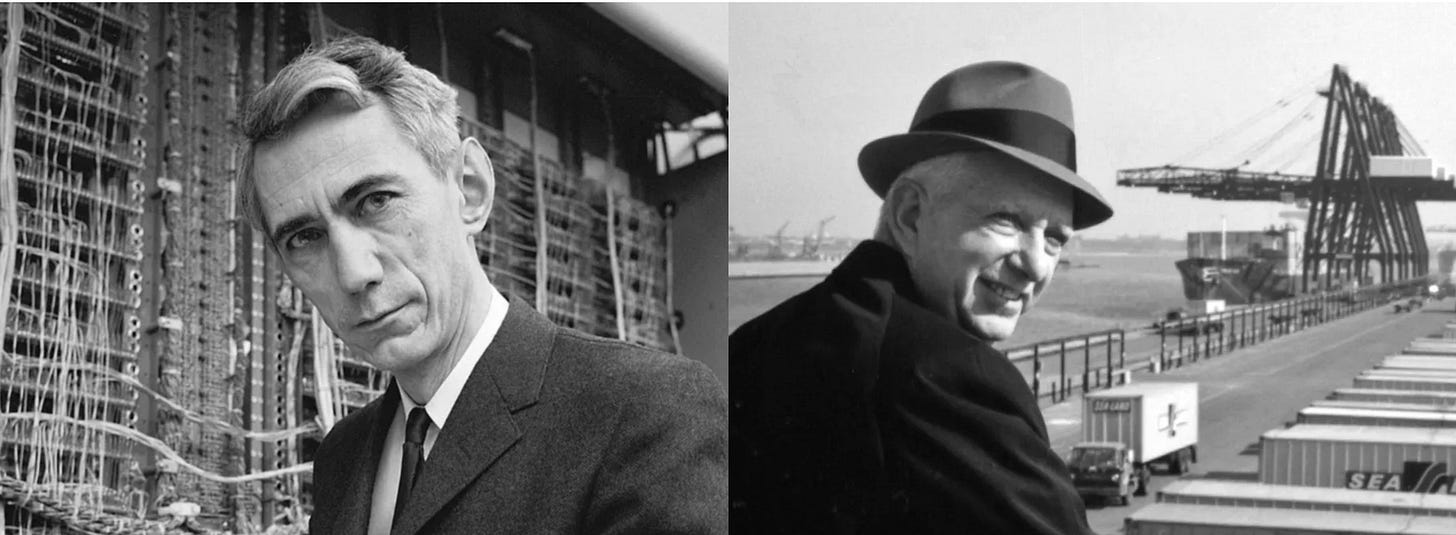Evergreen’s Ever Ace is currently the world’s largest container cargo ship. It measures 1,312 feet by 202 feet and holds up to 23,992 twenty-foot equivalent units (TEU). If these containers were placed end-to-end they would stretch for almost 91 miles.
In 1956, hand-loading cargo onto a ship in a U.S. port cost $5.86 per ton. By 2006, shipping containers reduced that price to just 16 cents per ton. Converting these nominal prices to time prices using blue-collar hourly compensation (wages and benefits) data from measuringworth.com indicates a 99.8 percent reduction in loading costs. For the time required to earn the money to pay to load one ton in 1956, you can get 440 tons loaded today. Loading has become 43,900 percent more abundant.
We don't want some atoms to move, like those used to construct a building. If they move, they lose their value. Other atoms can lose their value if they aren’t moving. Quickly being able to move them to higher-valued locations becomes very important. Containerization has added tremendous value to atoms because it is now much cheaper and faster to move them.
Is this also true of the movement of information? Maybe fiber is to copper what containerization is to manual loading? We have enjoyed a dramatic increase in the speed and lowering of the costs to move both bits and atoms.
The Pony Express was a great innovation for moving information when it was introduced on April 3, 1860. It reduced the time to send a letter 1,900 miles from St. Joseph, Missouri to Sacramento, California by 50 percent. But it was out-innovated by the first transcontinental telegraph on October 24, 1861. Communication moved from the speed of a horse to the speed of light in one day. The Pony Express closed down operations two days later.
While others had the idea of containerization, the American entrepreneur Malcolm McLean (1913-2001) made it a reality. McLean was the innovator, devoting the energy and patience and personal risk, to profitably operationalize the idea. When McLean envisioned a container that would work on ships, trains, and trucks, he was thinking of a universal unit that could hold any product. Note that McClean was convinced to give the patented designs to industry. This began international standardization of shipping containers.
Is Malcolm McLean the Claude Shannon of shipping? Claude Shannon (1916-2001) is the father of Information Theory and digitization. He coined of the word “bit” as a portmanteau of binary digit. James Gleick notes in The Information: A History, a Theory, a Flood that in 1948 an invention even more profound and more fundamental than the transistor came in the form of a 79-page monograph in The Bell System Technical Journal entitled “A Mathematical Theory of Communication.” Our information based economy is the product of the ideas and equations of Claude Shannon’s mind.
Shipping went from an analog world of all shapes and sizes to a standard unit. The Twenty-foot Equivalent Unit (TEU) has become the bit of global shipping.
You can learn more about these ideas in our forthcoming book, Superabundance, available for pre-order at Amazon.
Gale Pooley is a Senior Fellow at the Discovery Institute and a board member at Human Progress

















Share this post